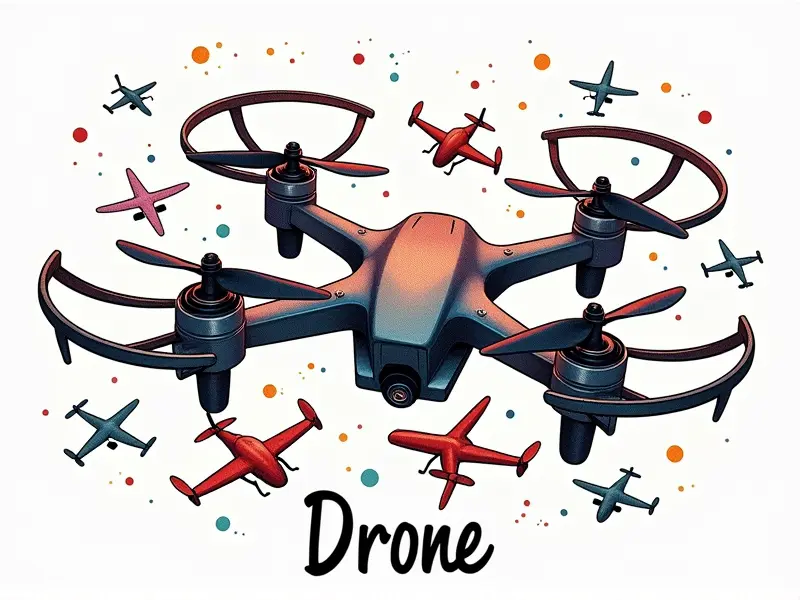Do repair drones have GPS?

Do Repair Drones Need Built-in GPS?
Repair drones are increasingly being used in various industries, from construction to telecommunications. These unmanned aerial vehicles (UAVs) perform critical tasks such as inspecting infrastructure and delivering maintenance materials. One of the key questions that arises when considering repair drone technology is whether these devices need built-in GPS capabilities.
Is GPS Essential for Repair Drones?
The integration of GPS into repair drones significantly enhances their operational efficiency and reliability. GPS allows drones to navigate autonomously, ensuring they can reach remote or hard-to-reach locations accurately. This capability is crucial in industries where time and precision are paramount.
How Important is GPS for Repair Drones?
- Navigational Precision: GPS ensures that repair drones can navigate with pinpoint accuracy, reducing the risk of errors or delays.
- Real-Time Monitoring: With GPS data, operators can track the drone's location and status in real-time, improving situational awareness.
- Automated Missions: GPS enables drones to perform pre-programmed missions without human intervention, increasing operational efficiency.
Does GPS Enhance Repair Drone Performance?
The inclusion of GPS technology in repair drones can dramatically improve their performance. By providing real-time location data and precise navigation capabilities, GPS helps drones operate more effectively and efficiently. This is particularly important for tasks that require high levels of accuracy and reliability.
Are GPS Features Necessary for Repair Drones?
The necessity of GPS features in repair drones depends on the specific application and operational requirements. For many use cases, such as infrastructure inspection or remote material delivery, GPS is indispensable. However, there may be scenarios where alternative navigation systems could suffice.
The Impact of GPS on Repair Drone Operations
GPS has a profound impact on repair drone operations by:
- Improving Safety: Accurate positioning data helps prevent collisions and ensures safe operation in complex environments.
- Enhancing Data Collection: GPS coordinates can be integrated with other sensor data to provide comprehensive insights into the drone's environment.
- Streamlining Maintenance Tasks: Precise navigation allows drones to perform maintenance tasks more efficiently, reducing downtime and costs.
Can Repair Drones Function Without GPS?
In some scenarios, repair drones can operate without built-in GPS. However, this typically requires alternative navigation methods such as visual odometry or magnetic field sensing. These alternatives may not offer the same level of accuracy and reliability as GPS.
Understanding GPS Integration in Repair Drones
The integration of GPS into repair drones involves several technical considerations:
- Sensor Fusion: Combining GPS data with other sensors (e.g., cameras, lidar) to create a more robust navigation system.
- Data Processing: Advanced algorithms are used to interpret and utilize GPS data effectively for real-time decision-making.
- Battery Efficiency: Optimizing power consumption to ensure that GPS does not significantly impact the drone's flight time.
Do Repair Drones Rely on GPS Technology?
While repair drones can function without GPS, they often rely heavily on this technology for optimal performance. The ability to navigate accurately and autonomously is a cornerstone of modern UAV operations, making GPS an essential component in many applications.
How Does GPS Help Repair Drones?
GPS provides several critical benefits to repair drones:
- Precision Navigation: Enables drones to reach exact locations with high accuracy.
- Real-Time Tracking: Allows operators to monitor the drone's position and status continuously.
- Data Integration: Facilitates the integration of GPS data with other sensors for comprehensive situational awareness.
Navigating with GPS: Repair Drones
The use of GPS in repair drones is transforming how these devices are used and perceived. By leveraging precise navigation capabilities, repair drones can perform tasks more efficiently and effectively, enhancing their value across various industries.
Conclusion
In conclusion, while repair drones can operate without built-in GPS, the integration of this technology significantly enhances their performance and reliability. The benefits of accurate navigation, real-time monitoring, and data integration make GPS an essential feature for many applications. As drone technology continues to evolve, the role of GPS in repair operations will likely become even more critical.

